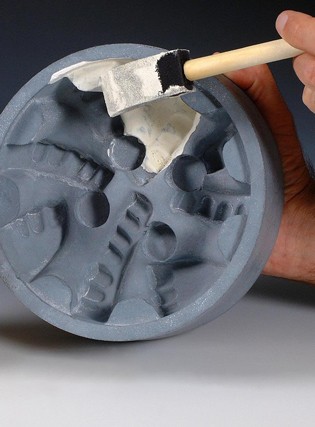Kinds of Ceramics Fundamental Information & Buying Manual
Understanding how they function and how to establish and apply them will ensure proper company and remove such issues as disbondment, discoloration and early failure.
For temperature applications, the coating system is expected to keep their appearance and strength while guarding material substrates at conditions over (300F) (150C). The finish may be afflicted by corrosion. Generally, films are comprised of a resin or vehicle, pigments and solvents. Conventional coatings, such as for example alkyds, use organic cars as pigments binders. Nevertheless, these vehicles might decompose below temperature, and this could trigger premature failure.
To over come this dilemma, warm coatings use temperature resilient resins. These resins ingredients have excellent thermal stability and opposition to oxidation. They’re also basically clear to, and tolerant to destruction by uv radiation.
The combination of heat resistant qualities and weathering characteristics produce these resins and films well suited for formulation in to heat resilient preservation coatings. Other films could be developed with replacement resins that will minimize cost per gallon while increasing attributes such as for example adhesion, scratching opposition and curing time.
The pigments used must be suitable for the resin and should not decompose at high temperatures. Pigments must also be color secure over the entire functioning heat array of the coating. Thermally stable pigments keep their shade over time, unlike other pigments in the marketplace and so are utilized in warm coatings. Typically, just black and aluminum shaded heat secure pigments were available. Today, there’s a wide range of colors, including pigments that’ll help numerous color corresponding options https://tavaco.vn/bang-gia-son-chiu-nhiet.html.
In specifying a high temperature level process, the facets affecting efficiency must first be assessed. As well as heat, these include the character of the substrate, their framework, strain due to thermal cycling, weathering, floor preparation and application limitations, corrosives and life span of the coating.Two popular pitfalls are created in specifying: Accepting that the simple temperature coating will undoubtedly be right for all applications.
“Overspecifying” the coating. Too frequently, the substrate skin temperature is guessed at, and the think is manufactured on the high area for safety. Therefore, the layer process specified may be suitable for operating conditions much greater than these that’ll be encountered. Also in overspecifying, the covering may not dry/cure properly. Large Heat coatings usually require recovering at raised conditions to reach optimum picture properties. A threshold heat must be achieved prior to the level completely cures/crosslinks or polymerize. Because of this reaction, a coating rated at (1000F/540C) won’t perform satisfactorily at a heat under (450F-230C). Recovering won’t ever get position and then is really a subject of time and temperature.
Correct software and substrate situations are critical to writing a specification. Both temperature selection and the most heat need to be identified. Floor thermometers and temperature guns are now much more complex today and are probably the most precise to take heat measurements. Heat readings taken at probably the most accessible places can be misleading. As an example, at walk out, a heap might be greatly range with refractories. It could have skin heat much below its top reaches where the lining may be thinner.
When contact measurements cannot be built, other practices must be used. One is infared emissivity measurement. An infared scan provides exact temperature profiles of such gear as smelters, boost furnaces, pipelines and kilns. Collection gas inlet temperature could be determined from the procedure control heat recorder. When this temperature is famous, the leave gasoline temperature can be found for an unlined heap of identified height and diameter.
You will find two extensive kinds of temperature films: those for support under (500F-260C) and those for company above (500F-to 1200F-650C). Formulations of the coating programs modify once the heat requirement exceeds these temperatures. Coatings must be developed designed for the application and running heat of the substrate to keep up that extensive array of heat, number of layers required and quick increase in temperature based on what is being painted. In cases when this is an incredibly rapid heat rise, it is impossible that any finish may work. This is because of the thermal strain due to the big difference in coefficients of growth between the substrate and the layer


